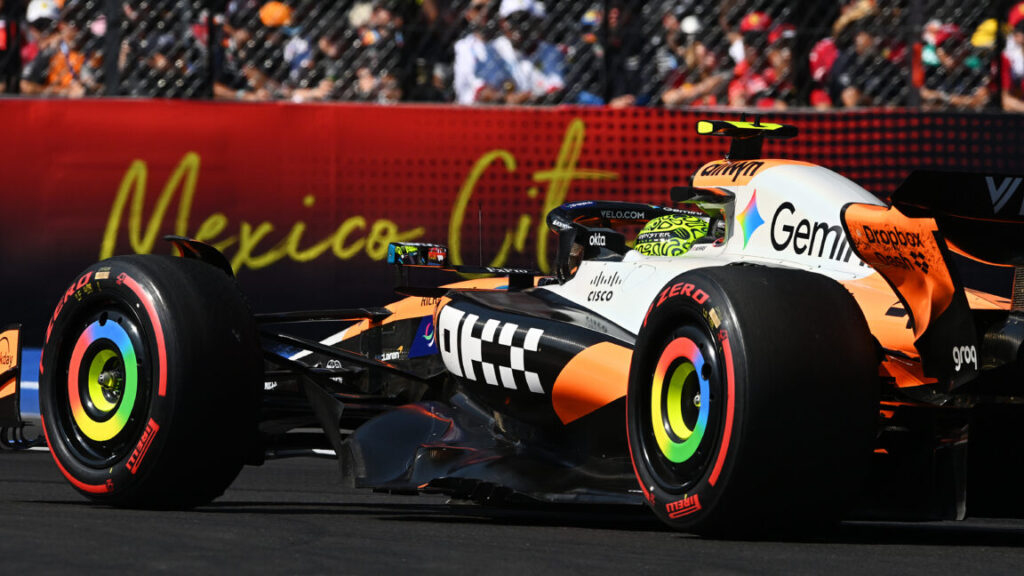Mexico City is one of the more unusual places that Formula 1 races, and it’s all thanks to altitude. The city sits at than 7,350 feet (2,240 m) above sea level, which makes the air noticeably thin compared to the average Grand Prix held at sea level. Like humans, F1 cars need air. Oxygen is necessary if you want any internal combustion to happen inside the turbocharged 1.6 L V6 engine. A good flow of air across the various radiators and heat exchangers in the car is vital if you want to make it to the end of the race. And the downforce-generating wings and underbody only generate downforce by creating differences in air pressure above and below the car. At over a mile above sea level, there’s about 20 percent less air, and therefore less power created by combustion, less efficient cooling of the cars, and less downforce able to be generated. That’s why, despite a very long straight that sees F1 cars reach some of their highest speeds all year—well over 210 mph (337 km/h)—the cars feature Monaco-spec wings that generate as much downforce as possible. Mexico City-spec adds lots of new vents and louvres to the cars’ bodywork as well as the high downforce elements, and even so, engine problems are a little more common here than elsewhere due to thermal management. Lap 1, turn 1: chaos. Mark Thompson/Getty Images Lap 1, turn 1: chaos. Mark Thompson/Getty Images The first of Verstappen’s excursions across the grass happened at turn 1 at the start. YURI CORTEZ/AFP via Getty Images The first of Verstappen’s excursions across the grass happened at turn 1 at the start. YURI CORTEZ/AFP via Getty Images Hamilton looked much faster in the Ferrari this weekend, at least until he was penalized for not rejoining the track properly after a clash with Verstappen’s Red Bull. Bryn Lennon – Formula 1/Formula 1 via Getty Images Hamilton looked much faster in the Ferrari this weekend, at least until he was penalized for not rejoining the track properly after a clash with Verstappen’s Red Bull. Bryn Lennon – Formula 1/Formula 1 via Getty Images The first of Verstappen’s excursions across the grass happened at turn 1 at the start. YURI CORTEZ/AFP via Getty Images Hamilton looked much faster in the Ferrari this weekend, at least until he was penalized for not rejoining the track properly after a clash with Verstappen’s Red Bull. Bryn Lennon – Formula 1/Formula 1 via Getty Images The Autodromo Hermanos Rodriguez circuit stands out in another way, too: It’s the only one with a baseball stadium dropped in the middle of it. The stadium is no longer used for the bat-and-ball sport, but it fills up for F1 with up to 40,000 fans, even if they don’t have the most exciting array of corners to watch. New championship leader It’s been 13 years since the last time F1 saw a change in the championship lead so late in the season, but that’s just what happened this weekend. McLaren’s Lando Norris had the measure of everyone in qualifying to secure pole position. And even with the 2,723-foot (830-m) run to turn 1, which positively encourages slipstreaming, he was well in the lead at the start and remained there for 71 laps, finishing just over half a minute ahead of everyone else.
Continue reading the complete article on the original source



